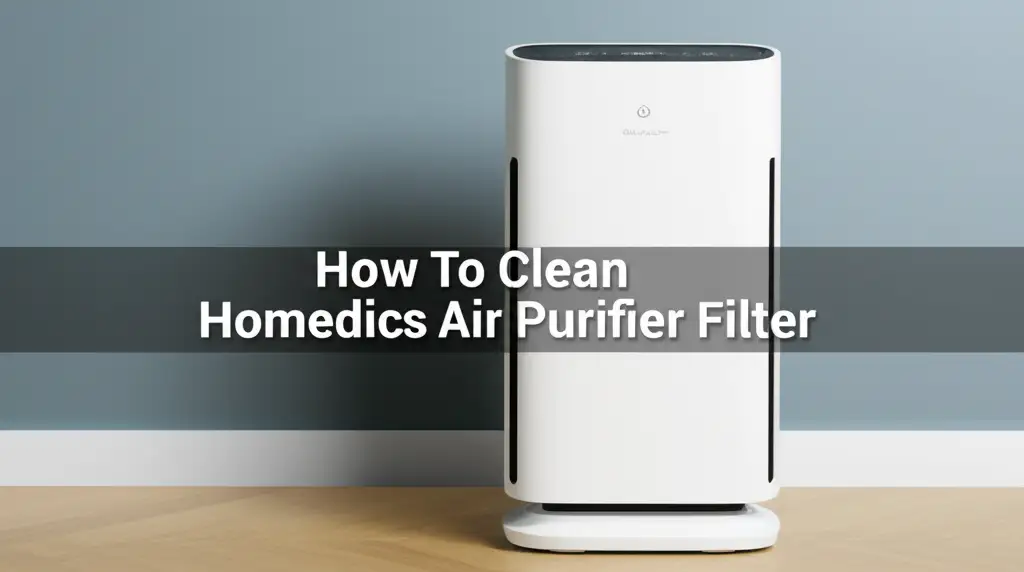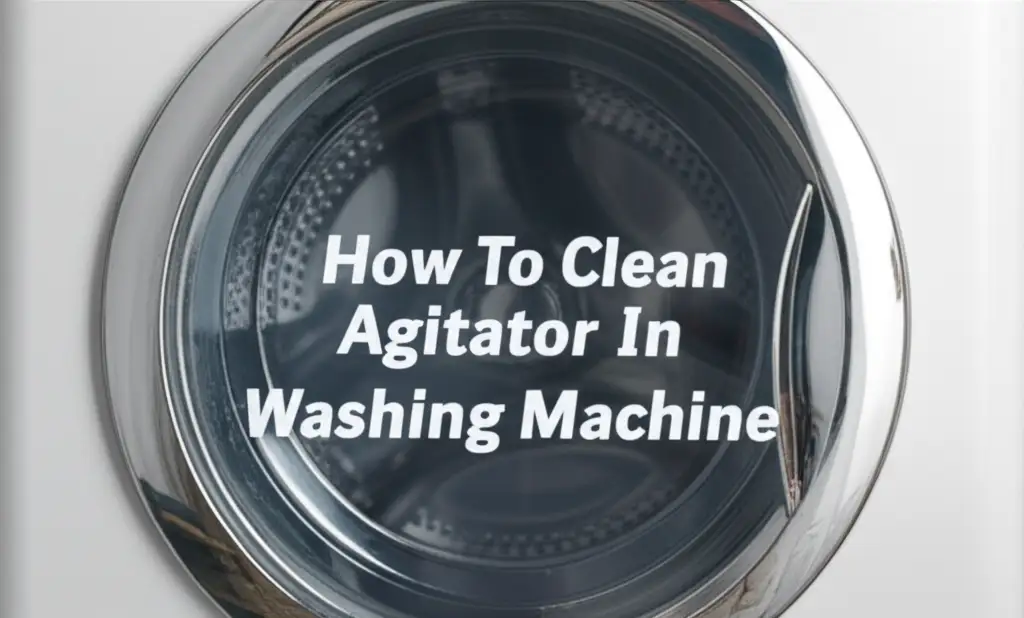· Appliance Maintenance · 14 min read
How To Clean Dyson Air Filter

Clean Your Dyson Air Filter for Peak Performance
Do you enjoy fresh, clean air in your home? Your Dyson air purifier works hard to provide it. However, its effectiveness relies heavily on a clean Dyson air filter. Over time, these filters collect dust, allergens, and pollutants. This accumulation can reduce airflow and lower air quality.
Neglecting your filter means your Dyson appliance works harder, consuming more energy. It might also spread dust rather than capture it. Regular filter cleaning is a simple task that offers big rewards. It keeps your air clean and extends your Dyson’s lifespan. I will guide you through the process, covering different filter types and common issues. You will learn the best methods for cleaning your Dyson air filter.
Takeaway
- Regularly clean your Dyson air filter for optimal performance.
- Identify your filter type (washable or non-washable) before cleaning.
- Washable filters require rinsing with cold water until clean, then air drying completely.
- Non-washable filters need gentle vacuuming or replacement.
- Proper maintenance ensures cleaner air and extends your Dyson appliance’s life.
To clean a Dyson air filter, first determine if it is washable or non-washable. Washable filters, found in some purifiers, rinse with cold water until clean. Non-washable filters, common in vacuums and some purifiers, require gentle vacuuming or replacement. Always allow washable filters to air dry completely for at least 24 hours.
Understanding Your Dyson Air Filter: Types and Importance
Dyson manufactures various filters for its range of products. Each filter type serves a specific purpose in air purification. Knowing your filter type is the first step in proper cleaning. Misidentifying your filter can lead to damage. You want to avoid harming your appliance during maintenance.
Dyson air purifiers and fans often use combination filters. These filters usually include a HEPA layer and an activated carbon layer. The HEPA filter captures microscopic particles like dust mites, pollen, and pet dander. The activated carbon layer traps gases, odors, and VOCs (volatile organic compounds). Some older Dyson models feature washable filters, usually found in their fan or purifier lines. Most newer purifiers and all Dyson vacuums use non-washable filters.
The importance of a clean air filter cannot be overstated. A clogged filter struggles to pull air through. This means your Dyson works harder to achieve the same airflow. Dirty filters also reduce the effectiveness of air purification. They can even become a source of unpleasant odors. Regularly cleaning or replacing your filter ensures consistent performance. It maintains the air quality in your home. This practice protects both your health and your appliance. It also helps in keeping your other cleaning tools effective, just like how to clean an air conditioner filter ensures efficient cooling.
Different Dyson models have specific filter designs. For instance, the Dyson Hot+Cool series has unique filter setups. You must consult your specific model’s manual for details. This ensures you handle your filter correctly. Knowing your filter type prevents accidental damage and ensures proper cleaning.
Gathering Your Tools: What You Need to Clean Your Dyson Filter
Cleaning your Dyson air filter requires minimal tools. Most items are likely already in your home. This makes the cleaning process simple and convenient. You do not need specialized equipment for this task. I find preparation makes any cleaning job easier.
For washable Dyson filters, you will need cold tap water. A clean, soft cloth is also useful for wiping down the exterior. Avoid using hot water, as it can damage the filter material. You should also avoid any cleaning solutions or detergents. These can leave residues that harm the filter or release fumes into your air. Your goal is a pure, clean rinse. This simplicity ensures filter integrity.
For non-washable filters, a vacuum cleaner with a brush attachment is essential. You will use this to gently remove surface dust. A microfibre cloth can help wipe away fine particles from the filter housing. Remember, these filters cannot get wet. Water will damage them permanently. Prepare a designated clean, dry area for the filter to dry if it is a washable type. This space should be free from dust and direct sunlight. Sunlight can degrade some filter materials over time.
Having all your supplies ready saves time. It also prevents interruptions during the cleaning process. I always lay out everything before I start. This way, I ensure a smooth and efficient cleaning experience. Proper tools guarantee a thorough clean for your Dyson air filter.
Step-by-Step Guide: Cleaning Washable Dyson Air Filters
Cleaning washable Dyson air filters is straightforward. It requires patience for the drying process. I will walk you through each step. This method ensures you clean your filter effectively.
First, you must remove the filter from your Dyson appliance. Refer to your Dyson user manual for precise instructions. Filter removal varies by model. For many Dyson purifiers and fans, you simply press release buttons. Then, you lift the filter housing away. Be gentle when handling the filter.
Next, take the filter to a sink. Use cold tap water to rinse the filter. Direct the water flow into the pleats and through the mesh. Continue rinsing until the water runs clear. This step removes trapped dust and debris. Do not use any soap or cleaning detergents. Chemicals can damage the filter media. They can also leave residues that affect performance or release harmful fumes. I personally ensure the water is cold; it protects the filter material.
After rinsing, gently shake the filter to remove excess water. Do not wring or twist the filter; this can damage its structure. Now comes the most critical step: drying. Place the filter in a well-ventilated area. It needs at least 24 hours to dry completely. A common mistake is putting a damp filter back into the machine. This can lead to mold growth and damage your Dyson. I suggest placing it on a towel or drying rack. Ensure it is away from direct heat or sunlight. You must wait until the filter is completely dry before reinstalling it. A damp filter will cause problems. Consider cleaning other Dyson filters, like how to clean your Dyson Hot and Cool model’s filter, with similar care. For vacuum filters, a different approach is necessary, as detailed in how to clean Dyson vacuum filter.
Maintaining Non-Washable Dyson Filters: Best Practices
Many Dyson appliances, particularly newer purifiers and all vacuum cleaners, feature non-washable filters. These filters often combine HEPA and activated carbon elements. They are designed for specific replacement intervals, not for washing. Improper cleaning can permanently damage them. I always check my Dyson model’s manual to confirm the filter type.
For non-washable filters, the primary maintenance involves gentle removal of surface dust. You can use a vacuum cleaner with a soft brush attachment. Carefully vacuum the exterior of the filter. This action removes loose particles that accumulate on the surface. Avoid pressing too hard, as this can damage the delicate filter media. This surface cleaning can extend the filter’s useful life slightly. It does not replace the need for eventual replacement.
You must never wash a non-washable filter with water. Water will clog the fine pores of the HEPA material. It will also damage the activated carbon, making it ineffective. Once wet, these filters lose their filtration capabilities. They cannot be restored. Putting a wet, non-washable filter back into your Dyson can also cause electrical damage. It can promote mold growth inside your appliance.
Dyson recommends specific replacement schedules for non-washable filters. This is usually indicated by a light on your appliance. It can also be found in your user manual. For example, some Dyson air purifier filters last for 12 months of continuous use. When the filter life indicator turns on, it is time for a new filter. Adhering to these schedules ensures your Dyson continues to purify air effectively. This is similar to understanding when to maintain other household filters like those found in how to clean filters on Dyson Ball vacuums.
Troubleshooting Common Dyson Filter Cleaning Issues
Even with clear instructions, you might encounter issues. Dyson filter cleaning can sometimes present small challenges. Knowing how to address them helps you achieve the best results. I often hear about these specific concerns.
One common problem is a persistent odor after cleaning. This usually happens if the filter was not completely dry. Any lingering moisture can encourage mold or mildew growth. This causes a musty smell. The solution is to re-clean the filter and ensure it dries thoroughly. Extend the drying time if needed, perhaps to 48 hours in humid conditions. Ensure good air circulation around the filter. You can also place it near a fan, but not a heat source.
Another issue is the filter indicator light remaining on after cleaning. For washable filters, the appliance usually resets automatically after reinstalling a dry filter. If it doesn’t, you might need to manually reset it. Consult your Dyson manual for the specific reset procedure. This often involves holding down a button for several seconds. For non-washable filters, the light indicates it is time for replacement, not just cleaning. You need to install a new filter to turn off the light.
Some users report reduced airflow after cleaning. This can happen if the filter was not rinsed sufficiently. Small particles might remain lodged deep within the pleats. It also occurs if the filter is not completely dry. A damp filter restricts airflow. In such cases, re-clean the washable filter more thoroughly. Then, ensure maximum drying time. For non-washable filters, reduced airflow indicates it’s likely time for a replacement. This happens when their capacity to trap particles is exhausted.
The Benefits of Regular Dyson Air Filter Maintenance
Regular maintenance of your Dyson air filter brings numerous benefits. These advantages extend beyond just clean air. They impact your health, your home, and your appliance’s longevity. I find these benefits make the effort worthwhile every time.
Firstly, consistent cleaning ensures optimal air quality in your home. Your Dyson air purifier is designed to remove allergens, pollutants, and odors. A clean filter performs this job efficiently. It captures microscopic particles like pet dander, dust mites, and pollen. This is especially important for individuals with allergies or asthma. Fresh, clean air contributes to overall well-being. It creates a healthier living environment for everyone. Think about how how to clean an air conditioner filter improves air circulation and energy efficiency; a clean Dyson filter does the same for your indoor air quality.
Secondly, regular filter cleaning extends the lifespan of your Dyson appliance. When the filter is clogged, the motor has to work harder. This increased strain can lead to overheating and premature wear. Over time, this can cause costly repairs or necessitate early replacement. A clean filter allows your Dyson to operate smoothly. It runs more efficiently. This reduces stress on its internal components. Maintaining your filter protects your investment. It ensures you get many years of reliable performance from your Dyson.
Thirdly, proper filter care improves your Dyson’s energy efficiency. A clean filter provides less resistance to airflow. This means your Dyson uses less power to move the same volume of air. This can lead to noticeable savings on your electricity bill over time. Energy efficiency is a win for your wallet and the environment. Moreover, a well-maintained Dyson operates more quietly. A clogged filter can make your machine sound strained or louder than usual. This reduces the quiet operation you expect from a premium appliance.
Finally, regular cleaning prevents unpleasant odors. Filters trap all sorts of airborne particles, including those that cause smells. If these particles build up, they can release odors back into your home. A clean filter keeps your air smelling fresh. It removes the source of potential stale or musty smells. This is a simple step to maintain a pleasant home atmosphere.
Dyson Filter Replacement: When to Consider It
While cleaning extends your Dyson air filter’s life, it does not last forever. There comes a point when replacement is necessary. Knowing when to replace your filter is crucial for continued performance. I pay close attention to my Dyson’s signals.
Most Dyson air purifiers and vacuums use non-washable filters. These filters have a finite lifespan. Dyson generally recommends replacing these filters every 12 months. This recommendation assumes 12 hours of use per day. However, usage patterns and environmental factors influence this. If you live in a particularly dusty area, or have pets, you might need to replace it more often. Areas with high pollution levels also shorten filter life.
Your Dyson appliance often provides a clear indication when it is time for a new filter. Many models have a filter life indicator light on the display. This light illuminates when the filter has reached the end of its effective life. Some models might even display a countdown or a “replace filter” message. Always consult your user manual for specific instructions on your model. It will detail how to check filter status and how to replace it.
Even if the indicator light has not come on, watch for signs of reduced performance. These signs include decreased airflow from your purifier or fan. You might notice a musty odor coming from the machine. If your vacuum seems less powerful, a clogged filter could be the cause. These are clear signals that your filter is saturated and needs replacement. A new filter will restore your Dyson’s performance. It will bring back optimal air purification. For instance, knowing how often to replace your how to clean Levoit air filter is also about recognizing these same signs of wear.
Replacing your filter is a simple process. Purchase genuine Dyson replacement filters to ensure compatibility and performance. Off-brand filters might not fit correctly. They might not offer the same level of filtration. After replacing the filter, remember to reset the filter life indicator on your Dyson. This ensures the appliance tracks the new filter’s life accurately.
Frequently Asked Questions
How often should I clean my Dyson filter?
You should clean washable Dyson air filters at least once a month. This frequency depends on usage and air quality. If you use your Dyson heavily or live in a dusty area, clean it more often. Always check your Dyson’s specific model manual for recommended cleaning intervals. Regular cleaning maintains peak performance.
Can I use soap to clean my Dyson filter?
No, you should not use soap or any cleaning solutions. Only cold tap water is safe for cleaning washable Dyson filters. Soap residues can damage the filter material. They can also release harmful fumes into your air once the filter is back in use. Stick to pure water for rinsing.
How long does a Dyson filter take to dry?
A washable Dyson air filter needs a minimum of 24 hours to dry completely. In humid conditions, it might require up to 48 hours. Ensure the filter is completely dry before reinstalling it. A damp filter can cause mold growth and damage your Dyson appliance. Place it in a well-ventilated area away from direct heat.
What happens if I do not clean my Dyson filter?
Neglecting your Dyson filter causes reduced airflow and decreased air purification. Your Dyson works harder, which can strain its motor and shorten its lifespan. A dirty filter also becomes a source of odors. This leads to poorer air quality in your home. Regular cleaning protects your health and your investment.
Do all Dyson filters clean the same way?
No, Dyson filters are not all cleaned the same way. Some Dyson models, particularly older purifiers, have washable filters that rinse with water. Most newer Dyson purifiers and all Dyson vacuum cleaners use non-washable HEPA and carbon filters. These non-washable filters require gentle vacuuming of surface dust or replacement. Always check your specific model’s manual.
Can I put my Dyson filter in a dishwasher?
No, you must never put a Dyson filter in a dishwasher. Dishwashers use hot water and detergents which will severely damage the filter material. The high heat can warp plastic components. The detergents will clog the filter’s fine pores, rendering it useless. Always hand-wash washable filters with cold water only.
Conclusion
Cleaning your Dyson air filter is a small task with significant rewards. You ensure your home enjoys fresh, clean air. You also extend the life of your valuable Dyson appliance. Understanding your filter type, whether washable or non-washable, guides your approach. Remember to always use cold water for washable filters and ensure complete drying. For non-washable filters, gentle vacuuming or timely replacement is key.
This simple maintenance routine boosts your Dyson’s efficiency. It keeps your indoor air quality high. You save money on energy bills and avoid costly repairs. Make filter care a regular part of your home cleaning schedule. Take action today to clean your Dyson air filter. You will breathe easier knowing your Dyson works at its best.
- Dyson filter
- air purifier maintenance
- clean Dyson
- Dyson fan filter
- HEPA filter
- air quality
- home cleaning




